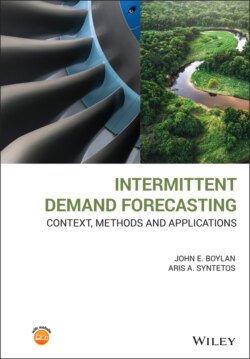Читать книгу Intermittent Demand Forecasting - John E. Boylan - Страница 18
1.2.4 Environmental Benefits
ОглавлениеObsolescence is a very important topic for supply chain management. The complexity of supply chains, in conjunction with increasingly reduced product life cycles, is resulting in high levels of obsolescence. Molenaers et al. (2012) discussed a case study where 54% of the parts stocked at a large petrochemical company had seen no demand for the last five years. Syntetos et al. (2009b) evaluated the inventory practices employed in the European spare parts logistics network of a Japanese manufacturer. They found one case, reported in Sweden, where some parts in stock had not ‘moved’ at all over the preceding 10 years. The value of the on‐hand excess (spare parts) inventory of the US Air Force, Navy, and Army has been estimated to be of $1.7 billion, $1.4 billion, and $2.5 billion, respectively (GAO 2015). Much of this excess stock is at risk of obsolescence.
When obsolescent (or ‘dead’) stock is created, there is considerable environmental waste. Firstly, there is an environmental cost associated with producing goods that are never used. Secondly, there are environmental costs of transporting these goods to national, regional, or local stocking points. Finally, there are environmental costs of disposing of these stocks. The prevention of the accumulation of dead stock relies on accurate demand forecasts. Consequently, more accurate and robust forecasting methods may be translated to significant reductions in wastage or scrap, with considerable environmental benefits.
